Science
Are we still listening to space?
When LIGO, the Laser Interferometer Gravitational-Wave Observatory, and its European counterpart, Virgo, detect a gravitational ripple from space, a public alert is sent out. That alert lets researchers know with a decently high confidence that this ripple was probably caused by an exceptional cosmic event, such as the collision of neutron stars or the merging of black holes, somewhere in the universe.
- Read more
- 491 reads
NASA's ECOSTRESS Monitors California's Record-Breaking Heat Wave
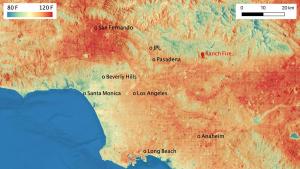
This ECOSTRESS temperature map shows the land surface temperatures throughout Los Angeles County on Aug. 14, 2020, during a heat wave.
- Read more
- 478 reads
Toward an Ultrahigh Energy Density Capacitor
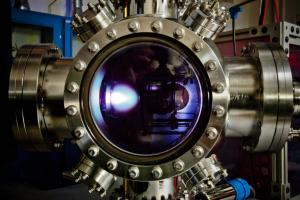
To make the new material, the thin film is first deposited via a pulsed-laser deposition process in this chamber. The bright “plume” you see is the laser hitting the target and depositing the material.
- Read more
- 506 reads
NASA's Webb to Study Quasars and Their Host Galaxies in Three Dimensions
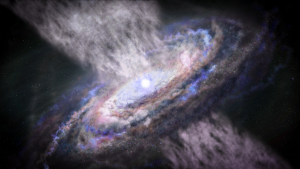
Quasars—accreting supermassive black holes—are paradoxically some of the brightest objects in the universe. Astronomers widely consider the energy from quasars to be the main driver in limiting the growth of massive galaxies. Scientists plan to use Webb to study the impact of three carefully selected quasars on their host galaxies in a program called Q3D.
- Read more
- 481 reads
NASA Researchers Track Slowly Splitting 'Dent' in Earth’s Magnetic Field

This stereoscopic visualization shows a simple model of the Earth's magnetic field. The magnetic field partially shields the Earth from harmful charged particles emanating from the Sun.
- Read more
- 483 reads
Scientists Determine 'Oumuamua Isn't Made From Molecular Hydrogen Ice After All

Scientists Determine 'Oumuamua Isn't Made From Molecular Hydrogen Ice After All
- Read more
- 454 reads
New NSF Physics Frontier Center Will Focus on Neutron Star Modeling in ‘Gravitational Wave Era’
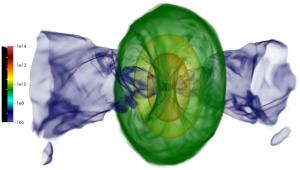
This rendering shows the density of matter in the aftermath of two merged neutron stars, resulting in the formation of a black hole.
- Read more
- 479 reads
Aurora Mysteries Unlocked With NASA’s THEMIS Mission
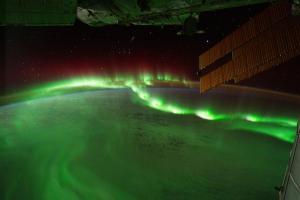
Auroral beads seen from the International Space Station, Sept. 17, 2011 (Frame ID: ISS029-E-6012).
- Read more
- 485 reads
Hubble Helps Uncover the Mystery of the Dimming of Betelgeuse
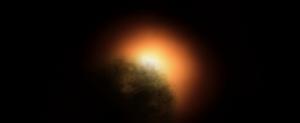
Betelgeuse’s Dust Cloud (Artist’s Impression)
- Read more
- 468 reads
NASA Satellite’s Lone View of Betelgeuse Reveals More Strange Behavior

An image from the Heliospheric Imager aboard NASA’s STEREO spacecraft shows the star Betelgeuse, circled. For several weeks in 2020, STEREO was the only observatory making measurements of Betelgeuse because of the spacecraft’s unique position in space.
- Read more
- 512 reads
Human Rights
Fostering a More Humane World: The 28th Eurasian Economic Summi

Conscience, Hope, and Action: Keys to Global Peace and Sustainability

Ringing FOWPAL’s Peace Bell for the World:Nobel Peace Prize Laureates’ Visions and Actions

Protecting the World’s Cultural Diversity for a Sustainable Future

Puppet Show I International Friendship Day 2020

